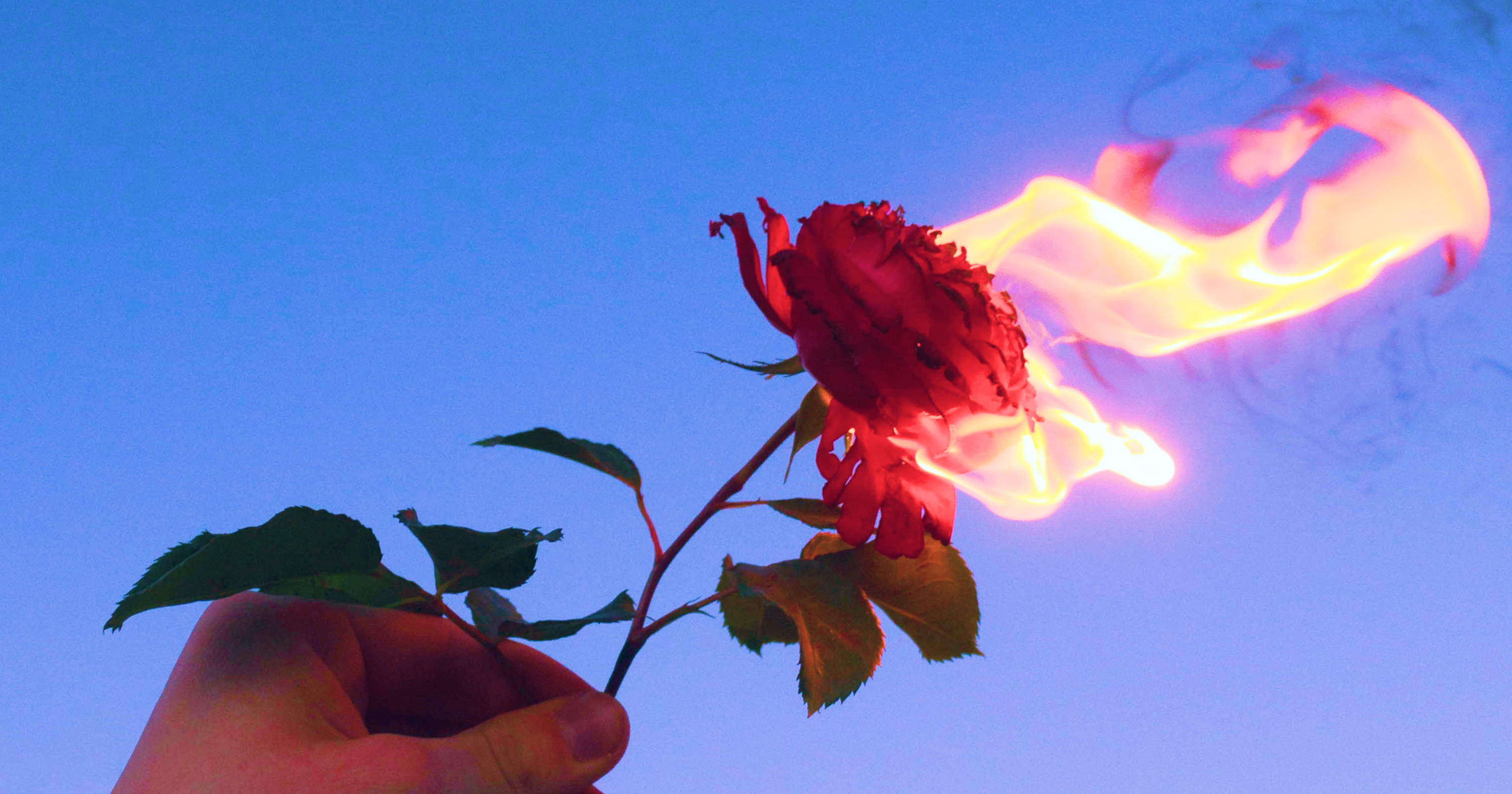Product storytelling: how to tell a compelling story around a technical product
Specs shmecks! Make your tech thing sparkle with the power of vivid storytelling.
In the past few years, the communications world has seen a pretty massive shift from "telling you a product or service is good and expecting you to trust us" to using the ancient power of storytelling (to convince you to trust us). Brand storytelling, business storytelling, and personal branding are all fun buzzwords that essentially mean the same thing: weaving a tale to woo readers into trading their coins for your wares using human interest instead of generic business language and potentially false promises.
Unfortunately, technical products tend to be some of the most boring possible types of products out there, at least for most of us. And yet, we must persevere and sell them regardless. Why? Because we're god damned professionals.
Here's how to get the most out of your product storytelling, even when the product is so boring that you might actually cry real tears.

What makes a good story? You don't need to be Edgar Allen Poe to tell a good story (though it would probably help, to be honest). What you do need for a good story is:
- A protagonist: Who is the main character? Who is going on this heroic journey?
- Tension/conflict: What problem is being solved?
- A satisfying conclusion: How is the drama resolved at the end of the story?
This is the most reductive list of storytelling requirements in the world. But that's fine because you're selling a product, not writing Infinite Jest (unless you really just don't understand keywords, in which case, write on, David Foster Wallace).
We won't go too deep into the fundamentals because we've written at length about them previously. So if you want more on the power of storytelling, look no further than… this other article:

With your business, not with each other. That would be creepy.
Telling the story of a great product or business is not that different from telling a story for storytelling's sake.
Oh wait, that's not true at all.
One is about inspiring the hearts and minds of the masses. The other is about inspiring the hearts and minds of the masses to buy the thing you're being paid to sell. So yeah, not really that similar.
But! Thankfully, product storytelling often retains the same general structure of traditional storytelling in a few key ways:
- A protagonist: This is your customer. They (not your product) are the main characters, and their journey is the key to telling a great product story.
- Tension/conflict: What problem is your product or service trying to solve? How will the thing you're selling make their life/journey/easier?
- A satisfying conclusion: How is the customer happier after your product entered their lives and slayed the proverbial dragon?
Brand and business storytelling is a powerful tool to differentiate yourself from the entire internet worth of competitors. The point isn't to talk about what makes you better because you are special and unique. The point is to center the customer in ways that other brands aren't, using compelling storytelling narratives.
So, how do you tell it a better story than everyone else? And how do you differentiate yourself when the product is positively snooze-worthy? That's a big order, so we compiled some helpful suggestions for you to take on your storytelling journey.
The product is not the point. This is usually true for most product storytelling, but this is especially true when the product is highly technical. Your priority, as a technical product storyteller, is to concentrate on the impact, not the specifics. How can the technical aspects of the product enrich your customers' lives? How will it make their lives or jobs easier? This solution-based approach should be at the heart of your storytelling.
Focus on the "before" and "after" stories when introducing technical products. Lay out the problems and challenges people face without the product-like time wasted, inefficiencies, or outdated systems. Once customers have a good grasp of them, show how your product improves the situation. This lets customers see the transformation from struggle to success, making it easier to understand how the product can help them in the long run.
For instance, our customer was once caught in a tough spot with old equipment causing constant delays, rising costs, and quality problems. They reached out to us for help, and we stepped in with our automation solutions. The magic happened when we slashed their downtime by a whopping 60% and cut their maintenance expenses significantly.
– Campbell Tourgis, Executive VP & COO, Wainbee
Here's a life pro tip: if you are relying on tech specs to win your audience over, you might want to do a re-write. Sure, there will always be those hyper-specific industry nerds who will want to look up and compare the deeply esoteric details. And that's totally fine, more power to them.
However, tech specs on their own won't win over an audience, and they certainly won't make you memorable in the eyes of a lay public.
If you're looking to engage a wider audience or need to appeal to those outside of the industry, make sure that the impact is always at the forefront of your storytelling.
Some questions to ask to generalize your messaging:
- What problems is your product solving?
- How will your customers' lives be better after buying your product?
- What are you doing that the competition isn't?
- What (likely) isn't working in the customer's life without the product?
Having a solid grasp of these questions will make the storytelling process so much easier and can guide your story-writing process.
This Ad from David Oglivy is iconic. It doubled the sales of Rolls Royce. He found this feature on page 50 of a technical report. He knew instantly it would resonate with customers. Some of the most brilliant marketing is about clarity
Name one thing worse than a bunch of self-congratulatory professional advertising copy that clearly centers on the company and not the customer. It's terrible and oh-so boring! Honestly this is such a great article for pointing that out (see what we did there).
To avoid the circlejerk, talk about the customer's favorite topic: themselves.
Even if you're selling dry electrical equipment or computer pieces--what problems do those bits and bobs solve? How will it enhance the customer's hero journey if they have those bits and bobs in their possession?
The most challenging client we had was someone selling components for sewage processing plants. We quickly realised Facebook wasn’t the right platform for our marketing message and focused on on-page SEO and articles on niche websites. The hero was the plant owner, dedicatedly cleansing sewage and safeguarding citizens. The obstacle was a relentless influx of waste. We provided technical data on how the product reduced processing time and averted environmental catastrophe. It wasn’t easy content to write, but it still boosted their Google ranking, which was the ultimate goal of this particular campaign.
– Martin Woods, Senior SEO Consultant, Indigoextra
As master storyteller Melanie Diezel shared on her episode of Prezly's PR Roundtable, when it comes to technical product storytelling: show, don't tell.
Specs are bland. Illustrate your potential customers how their lives will be enriched by your product's amazing capabilities, don't bore them with wattage and decibels. This is especially true, as Melanie said, if your buyer isn't necessarily your end-user who knows every minute detail related to the very specific product. Emphasize the why, not the what, to create that emotional, tangible connection.
This is always true, but especially when it comes to highly technical products: let your happy customers share their stories. Case studies, reviews, quotes. These are worth their weight in gold when it comes to communicating how your boring product will make a real, tangible transformation in your potential customers' lives.
To make technical products exciting, turn positive customer reviews into "success stories". This means telling real stories about how your product helped others by identifying the best customer reviews and interviewing them on their experience to dive deeper into it. The output can be a written case study, video testimonial, or webinar – whatever you believe is the best way to tell their success story.
When people hear about someone like them succeeding with your product, they think it might help them, too. This makes them interested because it's not just about the product, but how it can really make their work or life better. So, share simple stories about customers who used your product and saw great results. This way, you make your technical product more than just a tool – you show it as a key to success.
– Joe Kevens, Founder, B2B SaaS Reviews
Storytelling is all about painting a picture of the possibilities. Anecdotes and metaphors are really powerful tools when crafting these narratives.
For example, instead of saying that your industrial snowblower has 4,700 megajoubles of power (boring), you could paint a picture of the customer slaying millions of proverbial ice dragons using their wind flamethrower (very cool and exciting). Metaphor is not my strong suit, but it might be yours.
Just be careful about straying into the land of hyperbole when using storytelling devices like metaphors or anecdotes. It's always better to underpromise and overdeliver. If you promising the world, you need to be able to back it up with a really good product.

Our top picks of tools for PR and content teams to create interactive, visual, and engaging stories with.
How do we bring everything together in real life? Don't worry, we scoured the internet for examples just for you.
Why it works:
- Home security services are often expensive and seen as one of those "luxury" purchases for homeowners, so security companies often rely on dramatic scare tactics
- Electrical hardware is also often highly technical and can be intimidating to install
- Ring attempts to poke fun at the classic "home robbery" trope and, instead of emphasizing the technical aspects of the product, shows a mom easily using the ring camera on the go to prevent package theft
- Almost no technical aspects are discussed, and instead, the real-life application of the doorbell is front(door) and center
Why it works:
- Kevin Bacon
- Green technology can be incredibly, alienatingly technical for the average user. Hyundai (a happy Prezly customer, not that we're bragging) changes this narrative by showcasing how even non-technical users can get the most out of green tech (even if they get locked out of their own emails on a daily basis)
- The ad uses the silly trope of "older people aren't great with tech" and makes light of a common issue (that green tech specs are confusing, and there's a lot of misinformation and misconception about hybrid technology)

Why it works:
- We talked previously about the power of social proof. Does it get any better when your social proof is provided by rock legend Sting
- This retro ad featuring another Prezly customer Sennheiser (whoa, Prezly has so many happy customers!) shares the proof, not the pudding (so to speak)
- Sennheiser's ad focuses on the what (making Sting and you both sound incredible), not the how
For more storytelling examples, peep this article:

Digital storytelling examples to fuel your motivation
Congratulations, you are now the J.R.R. Tolkien of turning dull technical products into interesting stories. May you never experience techspeak storytelling roadblocks ever again!
Did we miss a great example? Have a tidbit on product storytelling to share? Shout us on X! Or why not subscribe to the Prezly newsletter for more tips, tricks, and storytelling tidbits?


